This was such a rewarding project.
If you’re not new here, you’re probably aware of my involvement in the Re-Love Project and what it’s all about. For those of you who don’t know, in short it’s a Feast Watson campaign in collaboration with Salvos Stores which sees eight designers “re-love” a neglected item of furniture with the resulting pieces being auctioned for charity. Pretty cool, huh? You can read my first post about it here and learn more on the Feast Watson website here.
Anyhoo, as revealed in my previous post about the project, I started with a very basic laminate pair of bedside tables I picked up for just $25 (I know, they don’t look too bad, though the edges were all chipped and they had misaligned panels)…
…and a kinda ambitious plan to completely transform them!
Basically, I wanted to “re-love” them into antique-style multi-drawer map cabinets in the same type of vein as my previous flat pack hack, though take it a few steps further and produce a truly authentic appearance. In doing so, along with challenging myself, I really wanted to encourage people to see the potential in those sometimes over-looked second-hand pieces of furniture (which are often affordable and abundant). I’m sure you’re all aware just how pricey genuine vintage multi-drawer cabinets can be so having the ability to create our very own DIY budget-friendly versions is pretty cool, maybe even a little empowering.
Anyhoo, despite a few hiccups along the way, numerous vision adaptations and those customary moments of self-doubt, things actually turned out perfectly and I’m honestly stoked with the results! I can’t wait for the auction (even if I am a little melancholy about having to let them go – at least I now know I can always create some more!).
Here’s how the whole thing went down…
Note: As you’ll read below, I cut all of my cladding from sheets of pine ply to save a bit of money and so I could completely customise the size. If you don’t have the tools or confidence to create your own strips from sheets, you should be able to find suitable sized “off the shelf” planks of timber so you need only cut them to length.
I started by carefully measuring the bedside tables then pretty precisely cutting all of the cladding from large sheets of pine ply. This included the faux drawer fronts (30 pieces in total), the shaker-style side trim (20 pieces in total) and the tops and bases (four pieces in total). Remember, I’ve got two tables to work with so all of the pieces and processes are pretty much doubled, having just one item of furniture would probably make things quicker and easier. I used our plunge track saw (an invaluable tool for a job like this) for the long cuts, switching to a basic drop saw for the shorter cuts.
Once all the cladding was cut, I thoroughly sanded each piece, finishing with fine grit paper for a nice, smooth finish. Using a lint-free cloth, I then applied two coats of Feast Watson Prooftint (Teak) diluted around 50/50 with Feast Watson Prooftint Colour Reducer. Because ply is so porous it’s easy for penetrating stains to come out looking way too dark. I tested a scrap of ply with undiluted stain and it appeared almost black (below pic)!
The colour reducer was perfect for achieving the exact tone I wanted, which, if I had to describe it, is kinda like a rich honey caramel – yummo! At this stage I also applied one coat of Feast Watson Scandinavian Oil (oh, how I love thee!) to easily seal all of the edges before attaching the cladding to the bedside tables. I used a brush and ensured it was well incorporated.
NOTES
:: Of course, you don’t have to use ply. I did for a few different reasons; one) to keep costs down, two) because it’s available in lots of different sizes and depths so I could completely customise my cladding, and three) because I wanted that slightly raw, industrial look – and contrary to what might be considered crude, I actually especially like the appearance of the multi-toned ‘sandwiches’ where the interior layers are exposed. If you don’t have the confidence or tools to create your own cladding from sheets of ply, or if you’d simply prefer to save the time and effort involved, you should be able to find suitably sized “off the shelf” timber planks instead. It just might mean spending a little more money and maybe being a bit restricted in terms of size. Remember too that some hardware stores might even cut your timber for you.
:: If using ply sheets, take note of the grain direction. I ensured mine was always running lengthways. Also, it’s likely your ply will have a “good” side so inspect your cladding and present the most attractive face. In addition, check your sheets prior to purchase and avoid those with noticeable imperfections, such as cracks or filled knot holes.
:: When taking all of your initial measurements, remember to factor-in the depth of any intended cladding. For example, my bedside tables were 42cm deep without cladding however once attached the faux fronts (which are 6mm deep) increase this to 42.6cm. I know that 6mm might seem pretty insignificant, though over-looking it would have created major problems, including leaving my horizontal side cladding 6mm short and my top and base overhang looking disproportionate.
Clearly, the existing modern chrome feet had to go. I originally planned to use these grungy industrial metal castors I had found online, though when I saw them in person decided they were a little too chunky and might compete with all my brass knobs and label holders, making everything look too busy. Also, at around $20 each, although not overly pricey for industrial metal castors, they weren’t exactly cheap. I instead opted for plain timber feet cut down from a length of square pine. Not only do they compliment the shaker style simplicity though they were super affordable.
For ease, I attached them to the bases (using liquid nails and three screws) prior to connecting the bases to the actual bedside tables (once attached the screw heads will be completely concealed).
I finished them in the same manner as the cladding; two coats of Feast Watson Prooftint (Teak) combined 50/50 with Feast Watson Prooftint Colour Reducer and one coat of Feast Watson Scandinavian Oil.
Before attaching all the cladding some painting was required.
To create an illusion of depth between the faux drawers I decided to paint the underlying real drawers black. I first thoroughly sanded each drawer front using an electric palm sander then applied one coat of Dulux Wash & Wear Flat (Black) using a brush. I didn’t bother with primer or multiple coats of paint because they were being clad over anyway and only the tiniest amount would be visible.
I was originally going to clad the entire sides of my tables with solid pieces of ply (like the top and base) though decided that using shaker style trim would be a bit more interesting and leave room to add a subtle colour pop! I thoroughly sanded each side using an electric palm sander with heavy grit paper. Remember, these tables are laminate and I really wanted to make sure any exposed paint was going to stick. I used a foam roller to apply one coat of Dulux Prep Lock Primer followed by two coats of Dulux Aquanamel Semi Gloss (Pastel Mint). Don’t worry about the apparent missed areas you can see in the below pic, the edges are being clad over.
Whilst I was at it I also painted the MDF backs. I know, I know, no-one is ever gonna see them though I think it’s a nice touch for whoever buys the tables. It’s the kinda detail that lets you know someone took care.
I started with the drawer fronts, working with one drawer (five pieces of cladding) at a time. To the rear of each piece of cladding I applied a sparing bead of liquid nails, spreading it evenly with a scrap of cardboard (to eliminate any overly thick areas and potential seepage). I then carefully laid each piece in place on top of the drawer. Once all five faux fronts were in position, I carefully clamped them. Bearing in mind the faux fronts will also be held in place with the handle screws, the purpose of the glue at this stage (although a worthy bonding agent in its own right) is really just to keep everything in place and make the process of attaching the knobs simpler.
The sides were a little more tricky. After attempting to clad them on my own and taking over an hour to attach five measly pieces I enlisted some help. Having two people for this process was soooo much easier. Each piece of cladding was smeared with liquid nails and held firmly in place by one person whilst the other person pre-drilled then screwed them on from the inside.
We started with the front-most vertical pieces. These needed to protrude the existing sides of the bedside tables (as can be seen in the above pic) in order to conceal the sides of the drawers (as the drawers originally sat on top of the sides – as can bee seen in the before pics). So, with the drawers in place we lined up the first piece of cladding perfectly, held it in position then removed the drawers to screw it on. This piece was then used as the guide for aligning the remaining four pieces of side cladding – no measuring or marking took place, it was all done by eye.
The lighting makes the mint look quite white in this photo. In reality it is far more green.
The top and base were easy. A big dollop of glue and five screws driven in from the inside.
NOTES
:: If you don’t have proper clamps, you can use anything heavy to compress the glue while it sets.
:: Make sure your screws are the perfect length. Long enough to penetrate the cladding though not so long they protrude through. I decided to use a combination of glue and screws to eliminate the need to clamp (saving time) and for extra insurance in terms of the cladding bonding.
:: Take care that when clamping or screwing, your ply remains in its intended position. The glue can make it prone to sliding.
My favourite part! The process of oiling really starts to bring the piece to life.
Using a brush I applied five (yes, five!) coats of Feast Watson Scandinavian Oil to the timber cladding, ensuring each coat was thoroughly incorporated. The raw, open-grained nature of ply makes it incredibly thirsty so five coats was needed to achieve the gentle lustre I was after. I sanded lightly between coats with fine grit paper to achieve a smooth, even finish.
Scandinavian Oil (more commonly known as Danish Oil) is my absolute favourite timber sealer. It goes on like water and creates a lovely soft sheen which enhances the natural grain and colour of the timber plus provides a protective finish.
NOTES
:: Be careful with the thickness and number of coats you apply. Scandinavian Oil can become quite glossy if allowed to ‘build’. Ensure each coat is thoroughly incorporated and any excess oil is wiped away.
:: Just in case you’re wondering, as touched on above I applied one initial coat of oil prior to attaching the cladding to seal all of the edges. I decided to complete the oiling process once all the cladding was connected to the tables (rather than whilst it was still in separate pieces) so there was no risk of damaging the finish during attachment. This just meant I needed to take a bit more care not to get oil on the painted areas.
I knew from the start that I wanted to do something a little different with these drawers. Rather than using label holders with pulls (which I have done on numerous occasions in the past), I opted for plain label holders flanked by small brass knobs. At first I thought I’d made a mistake and should have stuck to one central label pull, though now I absolutely LOVE the look!
Finding affordable mini knobs was tricky. Even the timber ones I came across were pricey. I settled for some I found on AliExpress (Antique Bronze Mini Handles – 42 cents each), though unfortunately they didn’t arrive in time :-( Luckily, the day before the project deadline, I managed to source some similar ones locally (Kaisercraft Brass Treasure Drawer Knobs – 70 cents each). Although they were a little more costly they are perfect. One of the great things about the fact that these bedside tables are actually modern in construction is that the drawers are on smooth glide rollers which, even with the small knobs, makes opening them a cinch.
The label holders are from eBay (60mm x 17mm Antique Bronze Label Holders – $13 for ten). I created some simple number labels on antique paper to fill them (see link above to view and download).
I was a little daunted by the prospect of having to accurately measure and attach 30 small label holders and 60 mini knobs though it actually wasn’t that bad. The trickiest part was ensuring the handle screws were all cut to the right length.
As a finishing touch I decided to line the drawers. I was originally planning to use geometric patterned wrapping paper (like a chevron or trellis) though was having trouble finding what I wanted when I had an alternate idea. Given my design for the bedside tables was loosely based on antique map drawers I thought using pages from my old street directory to create a random collage-effect would be perfect! I attached some of the pages using Mod Podge though found that the thinness of them caused some bubbling (nothing major, and it pretty much dried out completely, though enough to bother me) so I completed the lining using double sided tape – simple and perfect.
Project complete!
Remember what they looked like before? Here are some comparison pics.
Some of you might be thinking this all sounds like too much work, I mean, why not just make the whole thing from scratch? Well, it is definitely an option, though furniture construction (at least complex builds involving components like drawers) isn’t really my strong suit. Having a structurally sound starting point saved me a heap of time, effort and even money, not to mention the worry of it spontaneously imploding! Whilst it’s true that there was a bit of effort involved, it wasn’t really difficult, just a little time consuming and repetitive (given there were two of them).
Now, here’s something you don’t see everyday, a photo of….me!
The campaign marketers requested one so I thought I may as well share :-)
Remember, along with the pieces of the other seven designers involved with this campaign, these babies are being sold for charity, so if you love them (or know someone else who would) be sure to stay tuned! I’m not across all the eBay auction deets yet, though can tell you they go live on Thursday 24 July. In addition, I’m excited to let you know that Feast Watson will be covering shipping costs Australia wide! How awesome is that? So, whether you’re in Brisbane or Broome you’re in no way disadvantaged (of course, if you’re located outside Australia you are more than welcome to arrange your own freight). I’ll be sure to post again once the auctions go live!
PS Lots of hugs and kisses to my wonderful husband who helped immeasurably with this project.
UPDATE
The charity auction has now ended. Thank you to everyone who bid. We managed to raise a cumulative $2,500 for the Salvos!
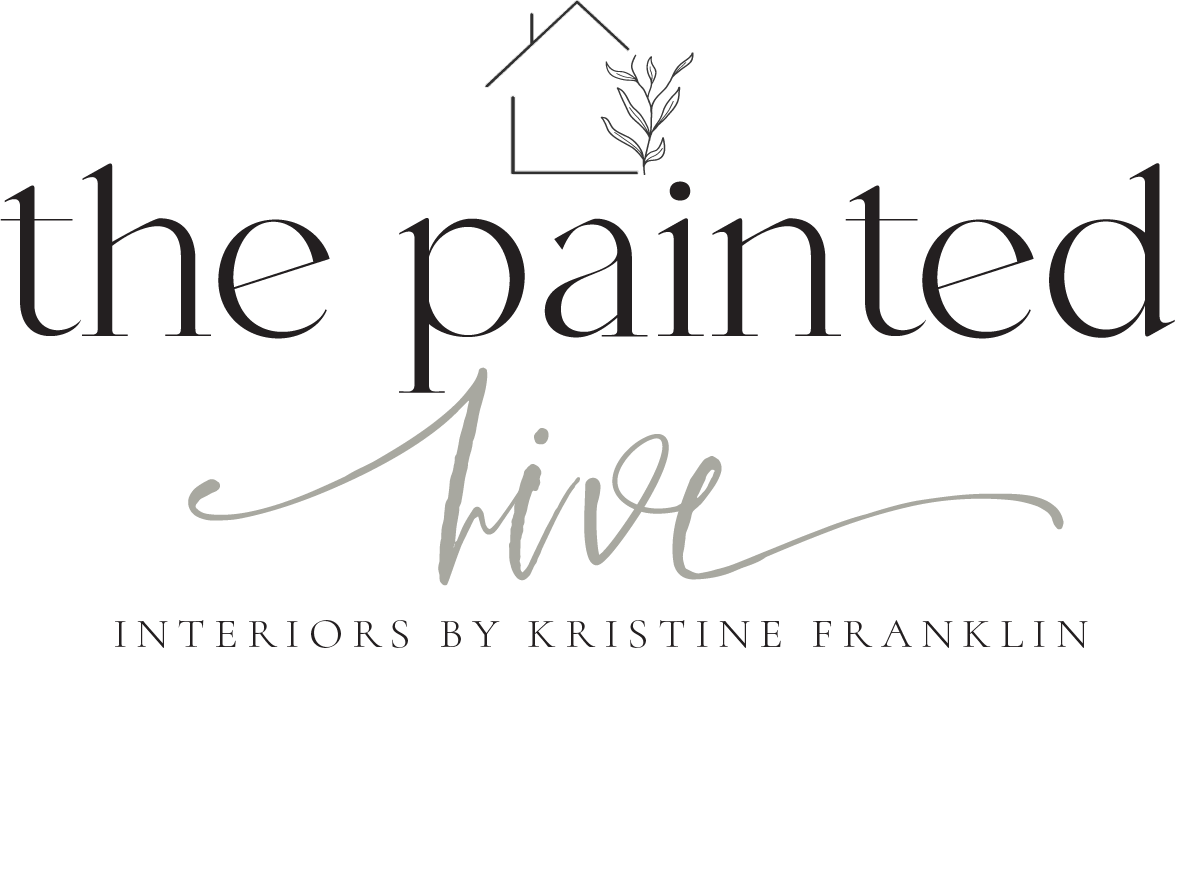
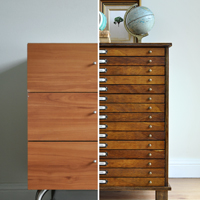
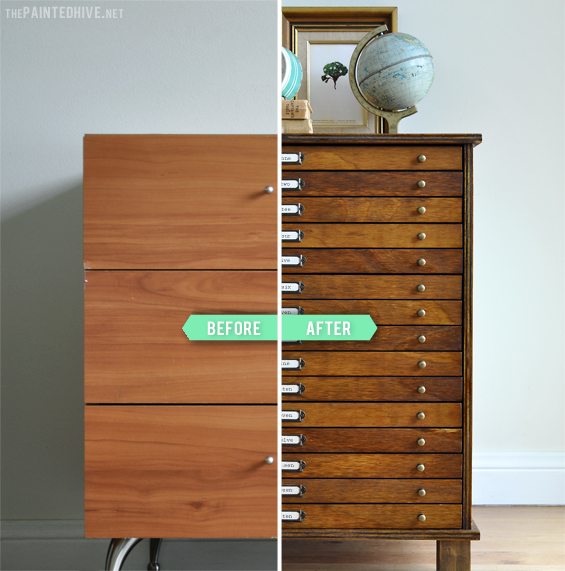



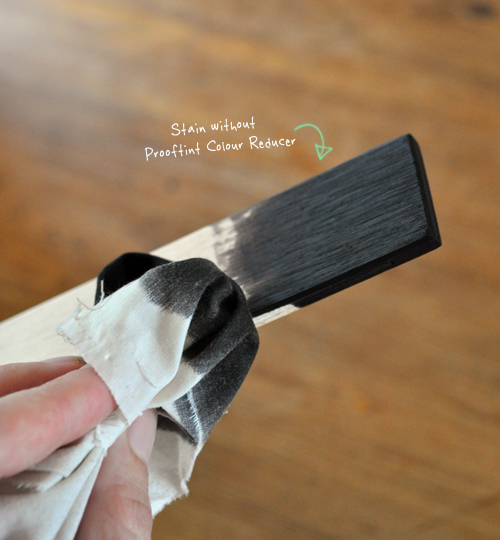
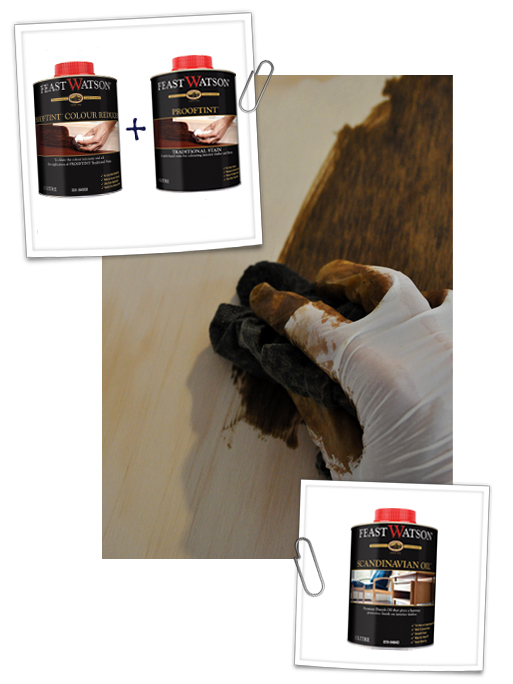



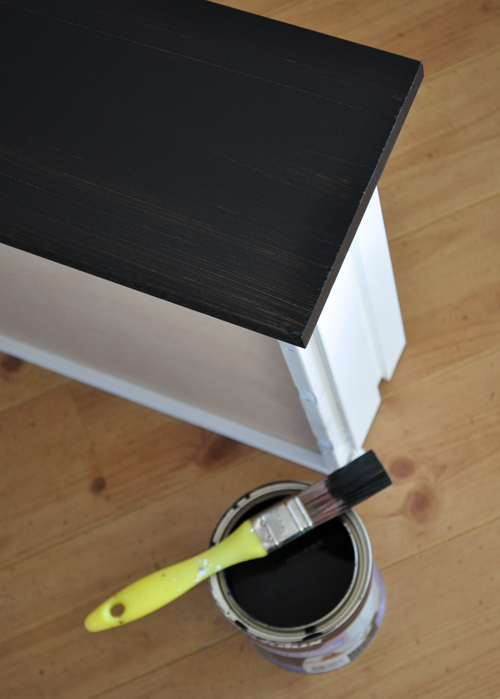
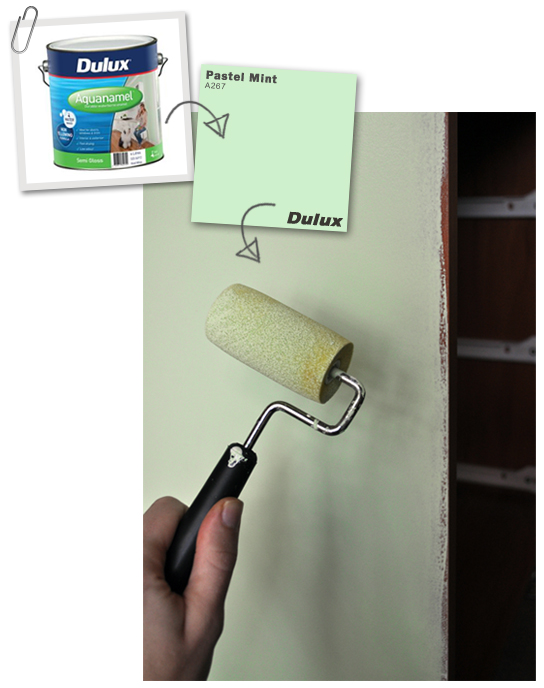

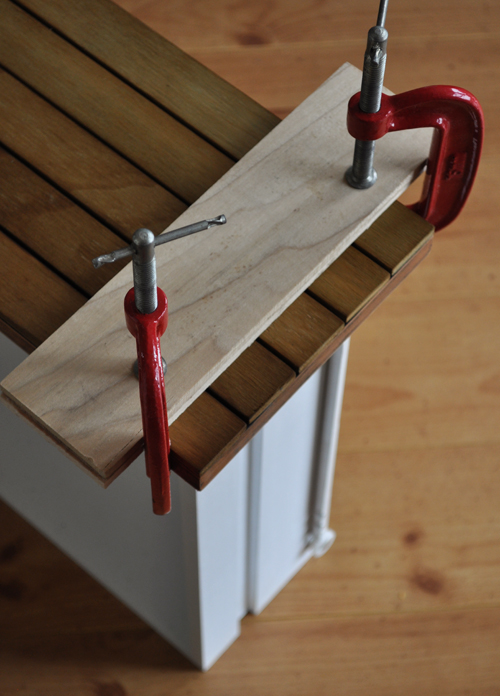
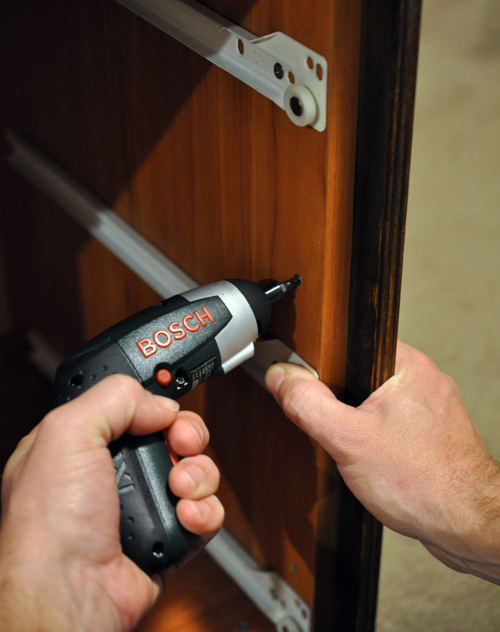
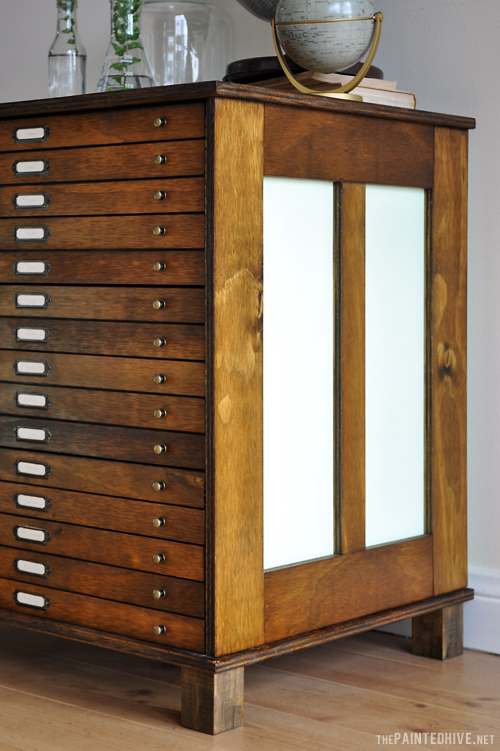

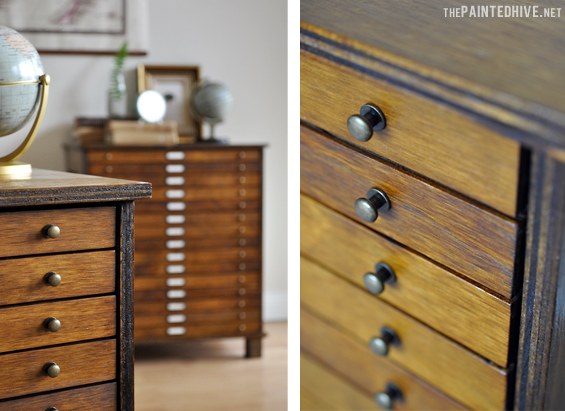
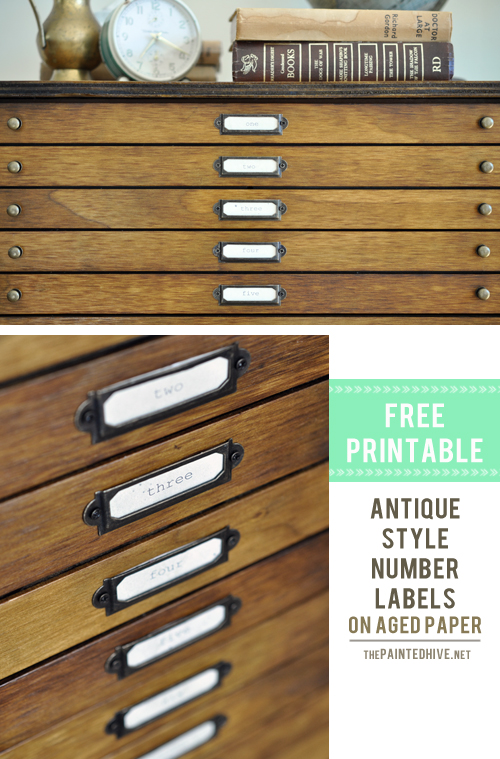
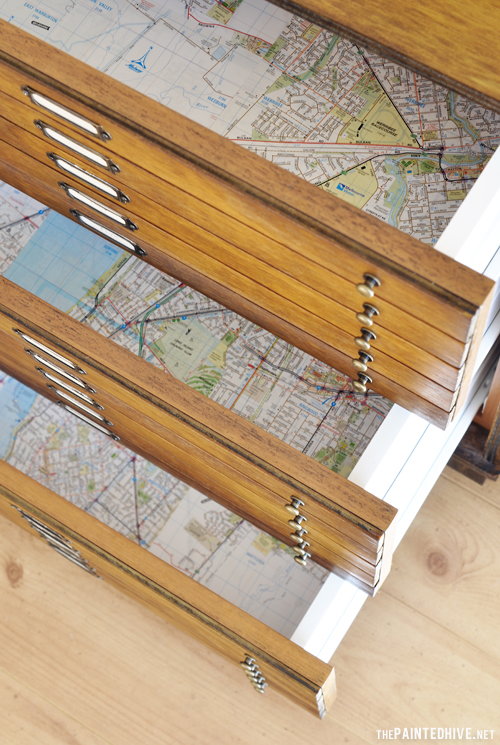
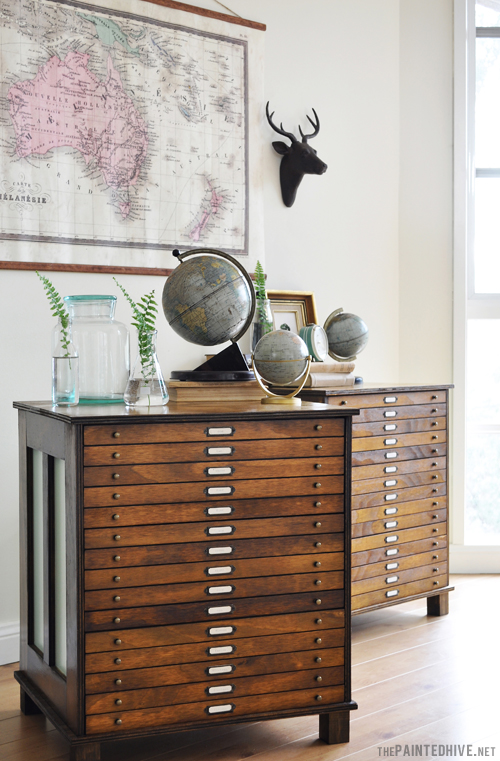
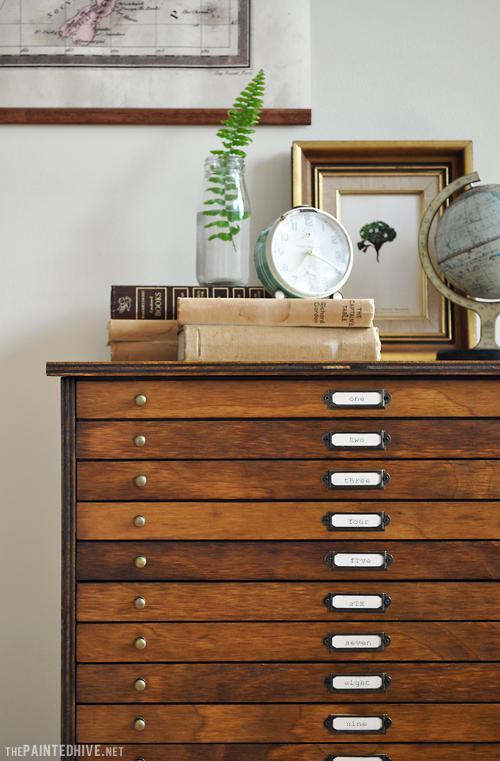
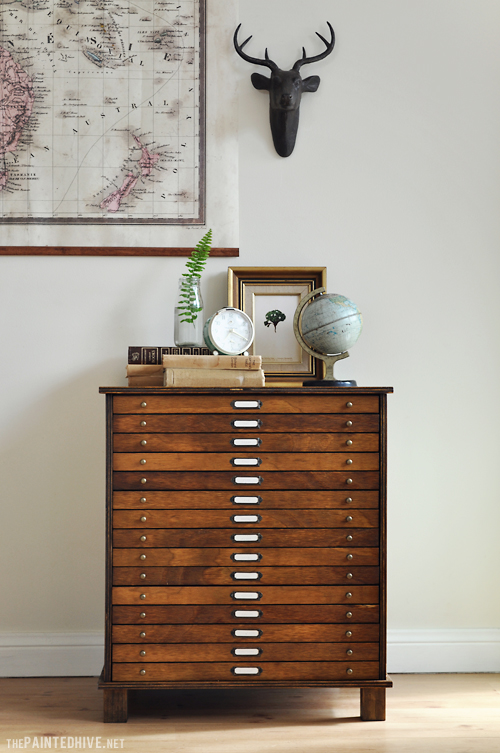
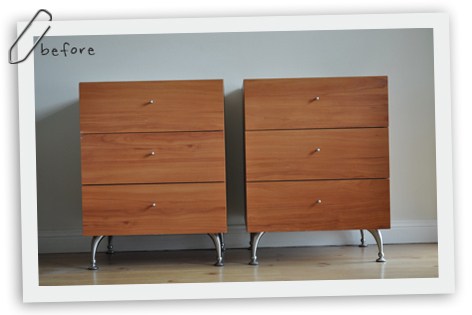
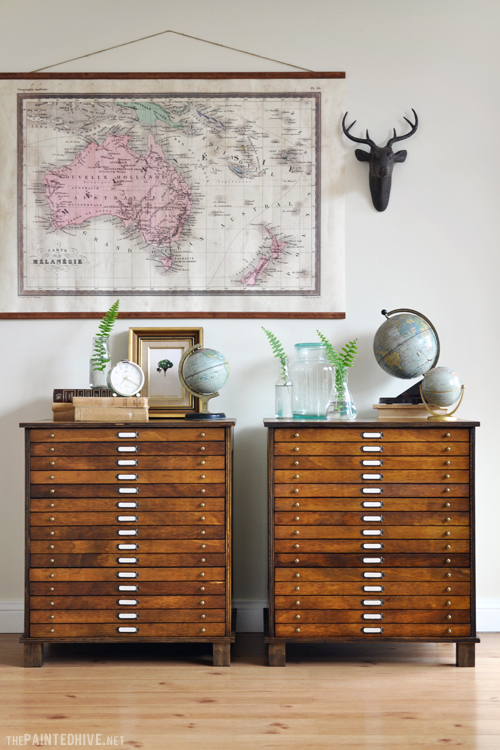
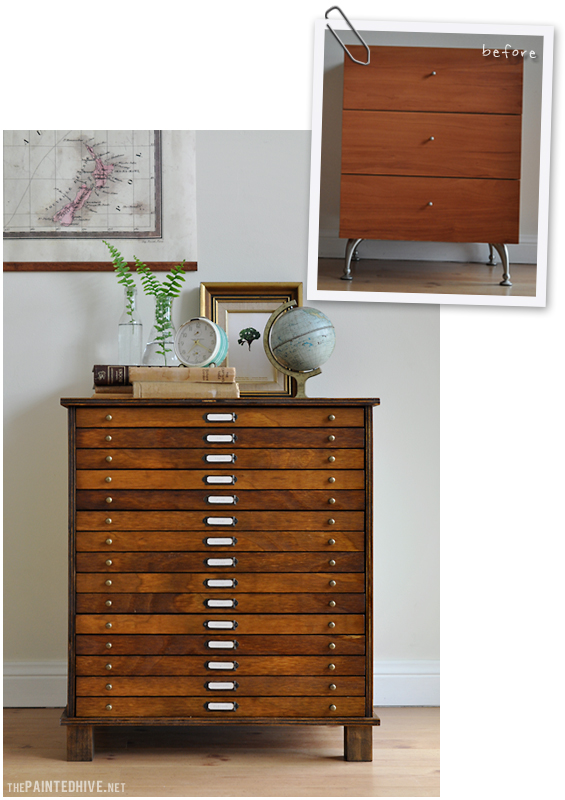
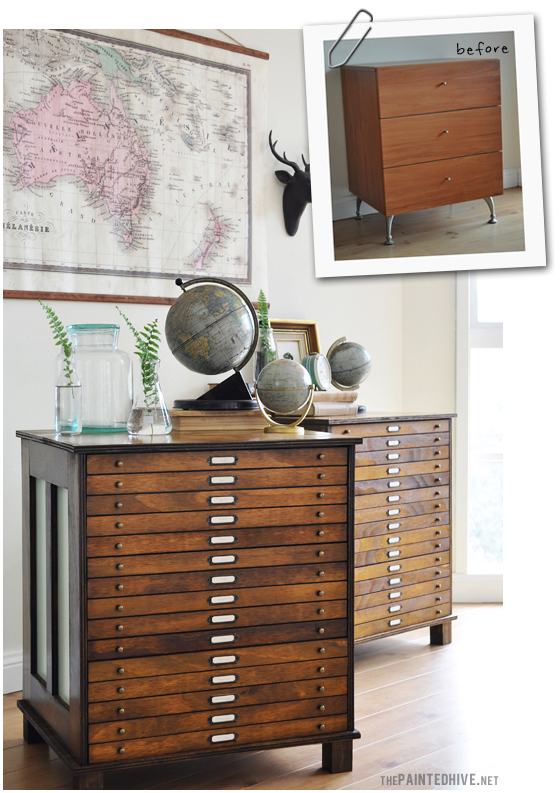

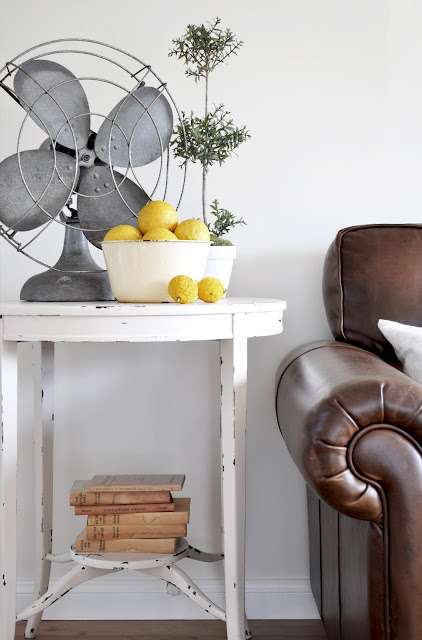
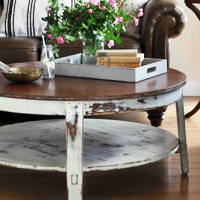
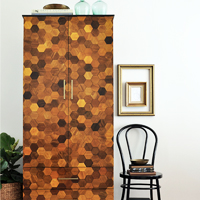
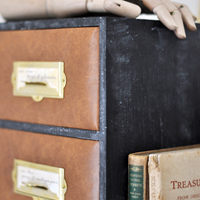

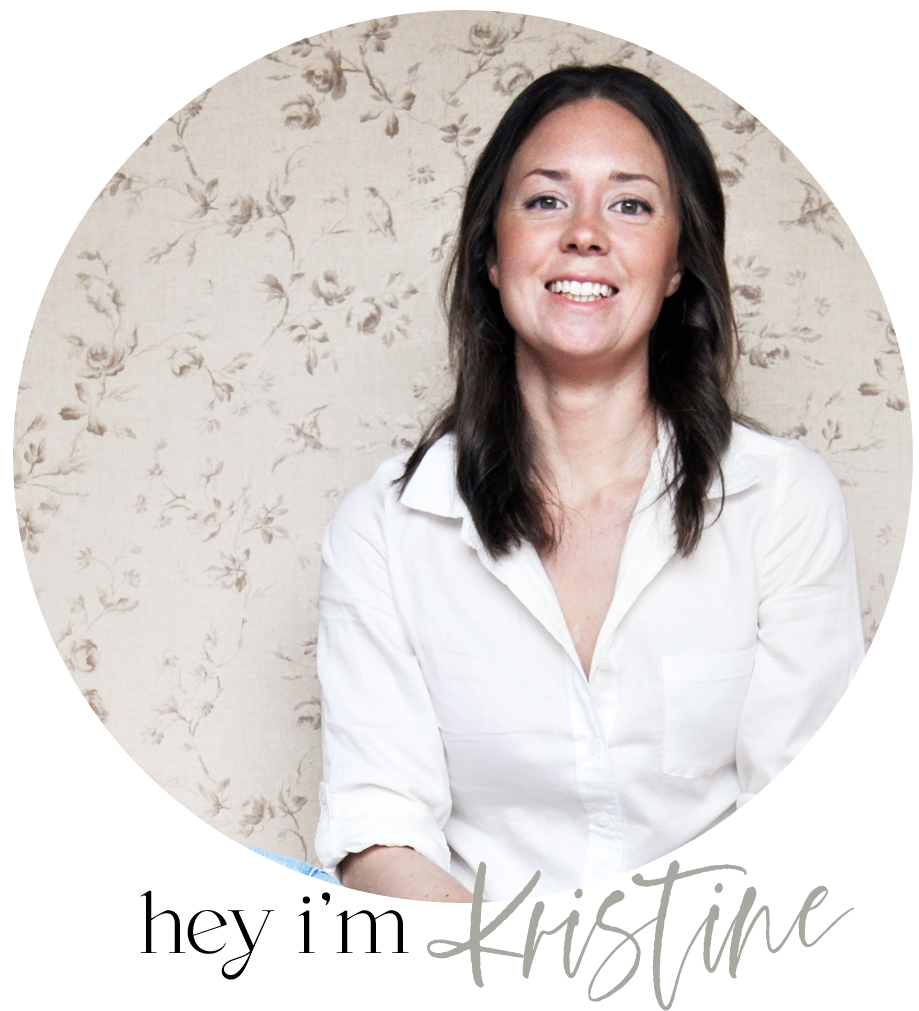

The minute I saw this project, I knew I had to have one. I have a little jog in my small foyer and I wanted one that had much smaller dimensions. I bought a 3 drawer chest from IKEA and my husband and I changed the width of the chest and the three drawers within. It wasn’t easy and it’s not perfect but the results were rewarding.
Thanks for sharing Penny. So glad it helped inspire you :)
I LOVE these!! I have an old card catalog from a library that my husband found for me. I use it for my craft supplies but the rest of the furniture is from Ikea – plain white glossy fronts -and it’s screaming for this makeover!! This is genius! Brava!!!
Oh yay Nancy. Glad to have given you some inspiration :)
Awesome! I seriously cannot believe these are the same units!
Ha, ha. Neither could the couriers who came to collect them. They were given a photograph of the originals as their reference and even after I explained everything to them they still didn’t get it!
WONDERFUL! SUCH GREAT IDEA! And such patience and products. I want to follow your other projects.
Hi Kristine,
Absolutely love your work. This turned out gorgeous.
Not sure if you’ve heard of I Spy DIY, but I noticed she posted an almost identical DIY recently – http://ispydiy.com/diy-home-faux-map-drawer-dresser/
Hope it’s just a coincidence, but thought you’d like to know.
Keep up the amazing work. It’s always exciting to see the projects you do. You’re so talented!
Tom
Thanks so much, and thanks for sharing that link. Someone actually sent this project to me a month or so ago too. It could be a coincidence, I guess.
I can’t believe how amazing these are. WOW!
Good blog post. I absolutely love this website.
Keep writing!
Hi Kristine
I’ve had this project tucked away in my brain for a long time & have decided to finally give it a go. I love map drawers! I’m going to do it on a chest of drawers to use a tv stand. Would you happen to remember what thickness ply you used? I’m tossing up between using a timber chest of drawers or an IKEA Malm drawer set. Am worried the malm drawer fronts might be too thick. Any thoughts?
Many many thanks for all your generous posts.
So I’ve actually just read all the previous comments and see that you advised the ply measurements and that you allowed 3mm between strips (that was another question I had!) Have also decided against the malm drawers as the tops are melamine whereas the ones you used are timber laminate. Hmm.. back to the drawing board. :)
Hi Cheryl
Glad you found some info and sorry I didn’t reply sooner. My inbox is kinda out of control!
Yes, the plywood I used for the faux drawers is 3mm thick and I allowed around 3mm between strips. The drawers I used were some kind of laminate, though melamine is essentially a form of laminate so you should be fine with the IKEA drawers. I think you’re perhaps thinking of timber veneer (which is a very fine layer of REAL timber – my drawers were just plastic!). Still, I added a plywood top to my drawers so if you’re planning on doing the same you can use drawers made of any material.
Thanks so much for the reply Kristine. I wasn’t sure if you had added trim to the top, so thanks for the clarification. The IKEA drawers have a sloping top on them and I don’t think my skills are good enough to flatten the shape out with timber. So I’m still looking for the right set of drawers with the right measurements. I’m impatient cause I just want to get into it!
These are magnificent!!!! Thank You for sharing!!!
A trick for decoupaging with paper is the use the glue watered down quite a bit and let the mosiutre soak into the paper before you press it down with a small ink roller or just the plastic roller under the sleeve of an old paint roller when its damp it stretches so you don’t get any bubbles forming. You can also seal the top of the paper so that it doesn’t get scratched or stained with just some PVA . or water base dvarnish. I did my floors edged in decoupage!
Thanks so much. Yes, I actually unknowingly tried this saturation method years ago on some dresser drawer fronts. At the time I thought I had ruined the paper because it bubbled so badly but then I never understood why it dried smoothly. Maybe it depends on the composition of the particular stock because I haven’t had consistent results? But I don’t decoupage that frequently. Thank you :)
Yes it depends on the paper. If you buy decoupage paper its specially made to not shrink or warp but most normal paper warbles. Wrapping is good. I’ve got a plywood set of drawers and I’d love to do something like this to keep a load of actual maps in! But I’m terrified of using the circle saw haven’t even taken it out of the box. Lol! It looks like a real antique. And like a lot of work went into it.